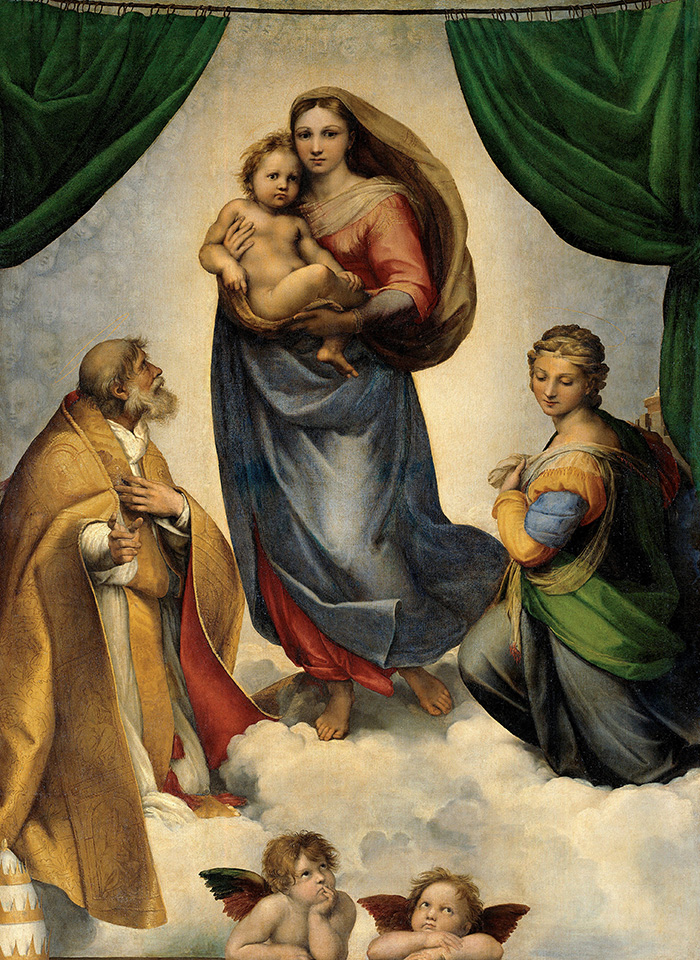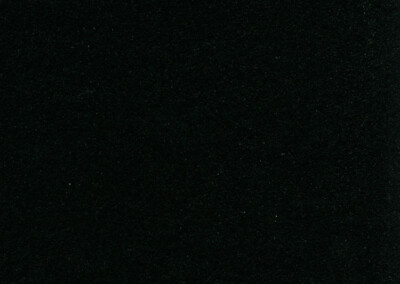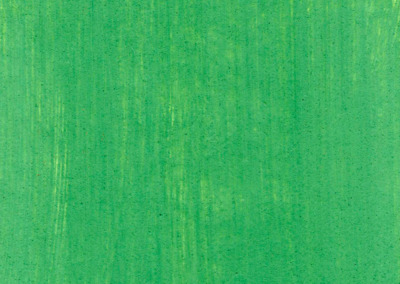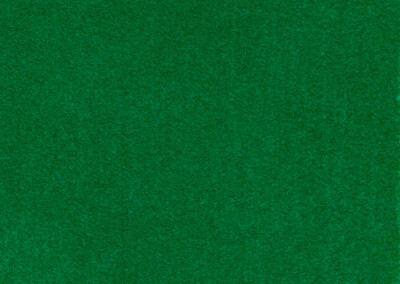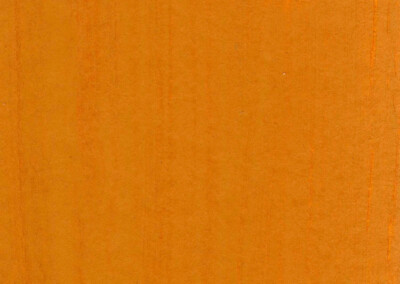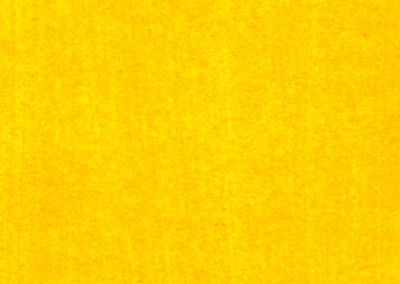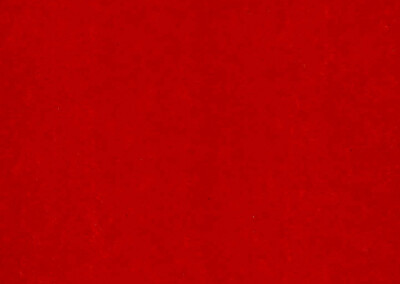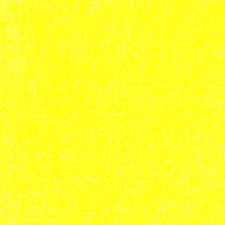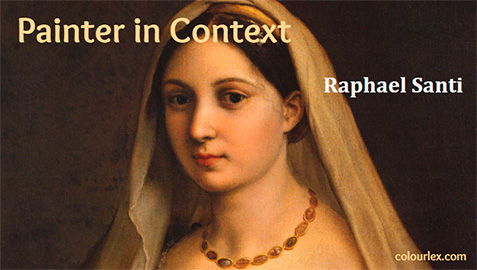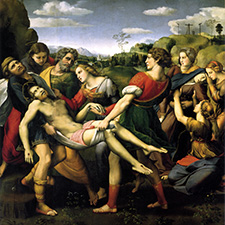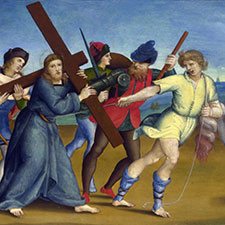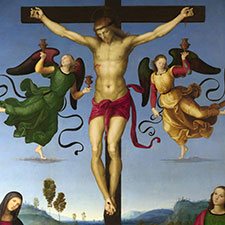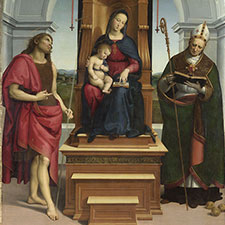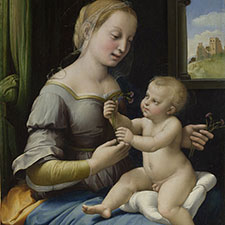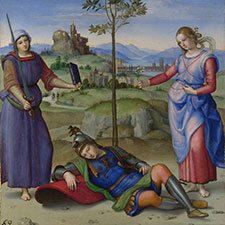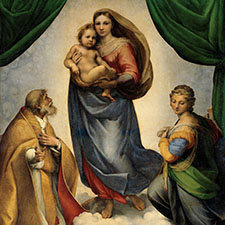Raphael, The Sistine Madonna
1512-13Raphael, The Sistine Madonna
1512-13Paintings sorted by Historical period | Painter | Subject matter | Pigments used
Overview
Date: 1512
Medium: Oil
Support: Canvas
Size: 265 × 196 cm
Art period: High Renaissance
Gemäldegalerie Alte Meister
Sistine Madonna
Image in high resolution
Text by F.A. Gruyer
F.A. Gruyer, Les Vierges de Raphaël, Paris 1869
Included in Esther Singleton, Great Pictures as Seen and Described by Famous Writers, Dodd, Mead and Co., New York 1899. Full text available at Projekt Gutenberg.
“Raphael seemed to have attained perfection in the Virgin with the Fish; however, four or five years later, he was to rise infinitely higher and display something superior to art and inaccessible to science.
It was in 1518 that the Benedictines of the monastery of St. Sixtus ordered this picture. They had required that the Virgin and the Infant Jesus should be in the company of St. Sixtus and St. Barbara. This is how Raphael entered into their views.
Deep shadows were veiling from us the majesty of the skies. Suddenly light succeeds the obscurity, and the Infant Jesus and Mary appear surrounded by a brightness so intense that the eyes can scarcely bear it. Between two green curtains drawn to either side of the picture, amid an aureole of innumerable cherubin, the Virgin is seen standing upon the clouds, with her son in her arms, showing him to the world as its Redeemer and Sovereign Judge. Lower down, St. Sixtus and St. Barbara are kneeling on the clouds on either side. Nothing is visible of the earth, but it is divined by the gestures and glances of the two saints, who are pointing to the multitude for whom they are imploring the divine mercy. Two angels are leaning on a kind of balustrade whose horizontal line forms a solid plane at the base of the composition. Nothing could be more elementary than the idea of such a picture; the ancient symmetry and the most rigid parallelism are scrupulously observed. Raphael becomes almost archaic, and, while returning to the simplicity of primitive traditions, by the force of genius he confounds the scientific exaggeration that is already so close to decadence. Doubtless he had raised his eyes high every time he had taken antiquity as a model, but he raised them much higher still by becoming exclusively Christian again, and by comprehending that the humblest way is not only the surest, but also the most sublime. Why is such simple means so highly successful in exalting our feelings? Why is it, when looking at this picture, we have moments of divine oblivion in which we fancy ourselves in Heaven? That is what we must try to penetrate and comprehend.” …
Pigments
Pigment Analysis
The pigment analysis is based on the work of K-H. Weber (1)
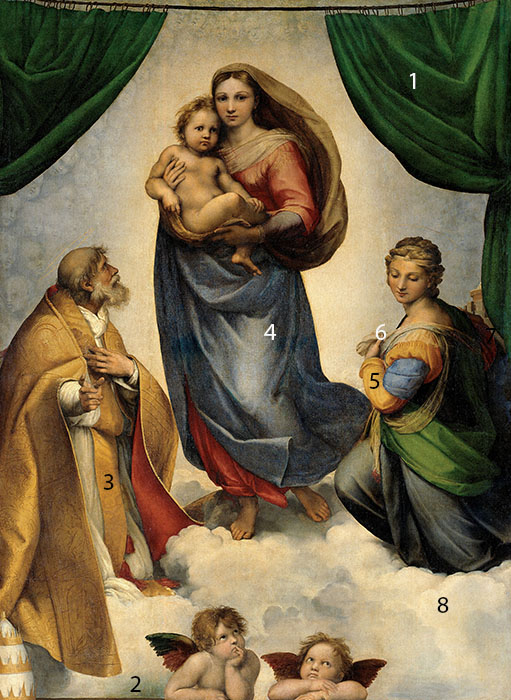
The green drapery in the upper part of the painting (Nr 1): lead white, charcoal black, orpiment and malachite (in the publication by Weber the green pigment is called “copper green”).
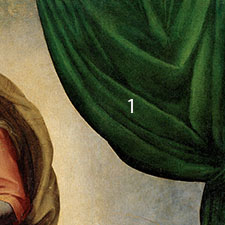
The grey cloud in the lower part of the painting Nr (2): lead white, charcoal black, vermilion, natural ultramarine.
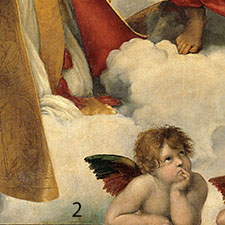
The yellow mantle of the pope (Nr 3): lead white, green earth, charcoal black, yellow ochre with traces of vermilion.
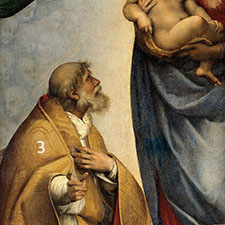
The blue robe of Madonna (Nr 4): lead white and natural ultramarine.
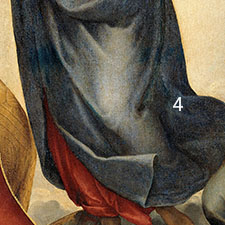
The yellow sleeve of St Barbara (Nr 5): lead white, vermilion, and lead-tin-yellow. The flesh colour of St Barbara’s finger (Nr 6): lead white, charcoal black and vermilion, lead white and vermilion, lead white and natural ultramarine (possibly from her blue mantle underneath). The red robe of St Barbara (Nr 7): lead white, charcoal black, green earth, yellow-brown ochre, and vermilion.
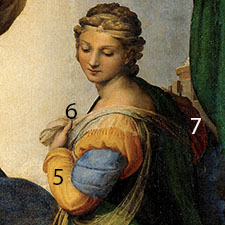
The white cloud (Nr 8): lead white with traces of vermilion and natural ultramarine.
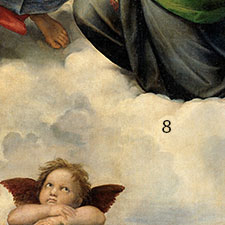
References
(1) Weber, K-H. Die Sixtinische Madonna, Maltechnik-Restauro, 90, 4 1984, 9-28
Pigments Used in This Painting
Resources
See the collection of online and offline resources such as books, articles, videos, and websites on Raphael in the section ‘Resources on Painters‘
PowerPoint Presentations
Painter in Context: Raphael
A richly illustrated presentation on the Italian Renaissance painter Raphael Santi containing information on painting technique, pigments employed, and important written and online resources.
Number of slides: 16
Formats included in the download: PowerPoint Screen Presentation (ppsx) and pdf
Videos
Video: 'Raphael, The Sistine Madonna' by James Marcinkowski
Video: 'Raphael, The Sistine Madonna' by The French Whisperer ASMR
Publications and Websites
Publications
Websites
Studying Raphael, Raphael Research Resource, National Gallery London.

